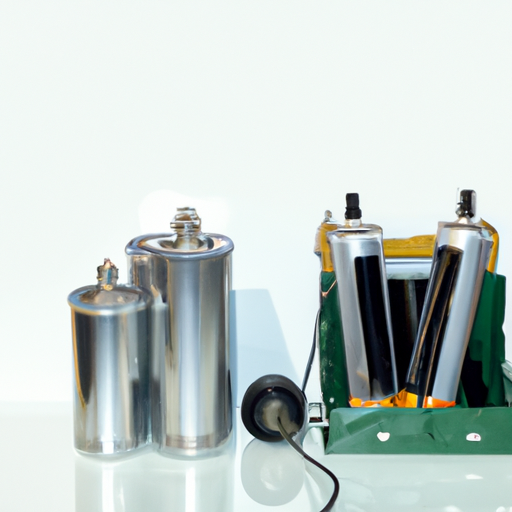How to Measure the Case Pressure of Cylindrical Batteries and Common Production Processes
I. Introduction
Cylindrical batteries are ubiquitous in modern technology, powering everything from portable electronics to electric vehicles. As the demand for higher performance and safety in battery technology increases, the importance of monitoring various parameters, including case pressure, cannot be overstated. Case pressure measurement is crucial for ensuring the safety, efficiency, and longevity of cylindrical batteries. This article will delve into the significance of case pressure in cylindrical batteries, explore various measurement techniques, and outline the common production processes involved in manufacturing these essential energy storage devices.
II. Understanding Case Pressure in Cylindrical Batteries
A. Definition of Case Pressure
Case pressure refers to the internal pressure exerted on the walls of a cylindrical battery casing. This pressure is generated by various factors, including gas production from internal chemical reactions, temperature changes, and mechanical stresses during operation. Monitoring case pressure is vital for assessing the battery's health and performance.
B. Factors Influencing Case Pressure
1. **Internal Chemical Reactions**: During the charge and discharge cycles, chemical reactions occur within the battery, leading to the generation of gases such as hydrogen and oxygen. An increase in gas production can elevate the internal pressure, potentially leading to rupture or leakage if not managed properly.
2. **Temperature Variations**: Temperature fluctuations can significantly impact case pressure. Higher temperatures can increase the kinetic energy of molecules, leading to greater gas production and, consequently, higher pressure. Conversely, low temperatures can reduce reaction rates, affecting performance.
3. **Mechanical Stresses**: The physical stresses experienced by the battery during operation, such as vibrations or impacts, can also influence case pressure. These stresses can lead to deformation of the casing, affecting its ability to contain internal pressure.
C. Consequences of Improper Case Pressure
1. **Safety Hazards**: Excessive case pressure can lead to catastrophic failures, including explosions or fires. Monitoring case pressure is essential for preventing such dangerous situations.
2. **Performance Degradation**: Abnormal pressure levels can affect the battery's performance, leading to reduced efficiency and capacity. This can result in shorter run times and increased charging times.
3. **Battery Lifespan**: Consistently high or low case pressure can shorten the lifespan of a battery. Maintaining optimal pressure levels is crucial for ensuring the longevity of cylindrical batteries.
III. Methods for Measuring Case Pressure
A. Overview of Measurement Techniques
There are several methods for measuring case pressure in cylindrical batteries, which can be broadly categorized into direct and indirect measurement techniques.
B. Direct Measurement Methods
1. **Pressure Sensors**:
a. **Types of Sensors**: Various types of pressure sensors can be used to measure case pressure, including piezoelectric and capacitive sensors. Piezoelectric sensors generate an electrical charge in response to mechanical stress, while capacitive sensors measure changes in capacitance caused by pressure variations.
b. **Installation and Calibration**: Proper installation and calibration of pressure sensors are critical for accurate measurements. Sensors should be placed in locations that accurately reflect the internal pressure, and regular calibration is necessary to ensure precision.
2. **Strain Gauges**:
a. **Working Principle**: Strain gauges measure the deformation of the battery casing due to internal pressure. As the pressure increases, the casing expands, causing a change in the resistance of the strain gauge.
b. **Application in Battery Case Pressure Measurement**: Strain gauges can be affixed to the battery casing to provide real-time pressure readings. They are particularly useful for monitoring pressure changes during operation.
C. Indirect Measurement Methods
1. **Gas Analysis**:
a. **Measuring Gas Buildup**: By analyzing the composition of gases produced within the battery, it is possible to infer case pressure. Increased gas production often correlates with rising pressure levels.
b. **Correlation with Case Pressure**: Gas analysis can provide valuable insights into the internal conditions of the battery, helping to predict potential pressure-related issues.
2. **Thermal Imaging**:
a. **Identifying Hotspots**: Thermal imaging can be used to detect hotspots on the battery casing, which may indicate abnormal pressure levels or internal reactions.
b. **Inferring Pressure Changes**: By monitoring temperature variations, it is possible to infer changes in case pressure, providing an indirect method of assessment.
D. Best Practices for Accurate Measurement
1. **Environmental Considerations**: Measurements should be taken in controlled environments to minimize the impact of external factors such as humidity and temperature.
2. **Calibration and Maintenance of Equipment**: Regular calibration and maintenance of measurement equipment are essential for ensuring accuracy and reliability.
IV. Common Production Processes for Cylindrical Batteries
A. Overview of Battery Manufacturing
The production of cylindrical batteries involves several key stages, each critical to ensuring the quality and performance of the final product.
B. Key Stages in the Production Process
1. **Material Preparation**:
a. **Active Materials**: The active materials, such as lithium compounds, are prepared and processed to ensure optimal performance.
b. **Electrolytes**: Electrolytes are formulated to facilitate ion transport within the battery, playing a crucial role in its overall efficiency.
c. **Separators**: Separators are essential for preventing short circuits while allowing ion flow. Their quality directly impacts battery safety and performance.
2. **Cell Assembly**:
a. **Winding vs. Stacking Methods**: Cells can be assembled using winding or stacking methods. Winding involves rolling the electrode and separator materials into a cylindrical shape, while stacking layers flat. Each method has its advantages and is chosen based on the desired battery characteristics.
b. **Importance of Precision in Assembly**: Precision during assembly is critical to ensure uniformity and performance. Any misalignment can lead to inefficiencies and safety hazards.
3. **Electrolyte Filling**:
a. **Techniques for Filling**: Various techniques are employed to fill the battery with electrolyte, ensuring that it is evenly distributed throughout the cell.
b. **Ensuring Uniform Distribution**: Uniform electrolyte distribution is vital for optimal performance and longevity, as uneven filling can lead to localized pressure variations.
4. **Sealing and Casing**:
a. **Types of Casings Used**: Different materials and designs are used for battery casings, each offering varying levels of protection and pressure retention.
b. **Importance of Sealing for Pressure Retention**: Proper sealing is essential for maintaining internal pressure and preventing leaks, which can compromise battery safety.
C. Quality Control Measures
1. **Testing for Case Pressure**: Quality control processes include rigorous testing for case pressure to ensure that all batteries meet safety and performance standards.
2. **Other Performance Metrics**: In addition to case pressure, other performance metrics such as capacity, cycle life, and thermal stability are also evaluated during quality control.
D. Innovations in Production Processes
1. **Automation and Robotics**: The integration of automation and robotics in battery manufacturing has improved efficiency, precision, and consistency in production processes.
2. **Advanced Materials and Designs**: Ongoing research into advanced materials and innovative designs is leading to the development of batteries with enhanced performance, safety, and sustainability.
V. Conclusion
In conclusion, measuring the case pressure of cylindrical batteries is a critical aspect of ensuring their safety, performance, and longevity. Understanding the factors that influence case pressure and employing appropriate measurement techniques can help mitigate risks associated with battery operation. Additionally, the production processes involved in manufacturing cylindrical batteries are complex and require precision at every stage to deliver high-quality products. As technology continues to evolve, innovations in battery design and manufacturing processes will play a pivotal role in shaping the future of energy storage solutions.
VI. References
1. Academic papers and articles on battery technology and case pressure measurement.
2. Industry standards and guidelines related to battery manufacturing and safety.
3. Relevant books and resources on cylindrical batteries and their applications.
This comprehensive overview provides insights into the importance of case pressure measurement and the intricate processes involved in the production of cylindrical batteries, highlighting the critical role they play in modern technology.













